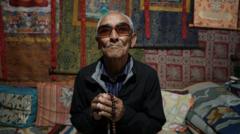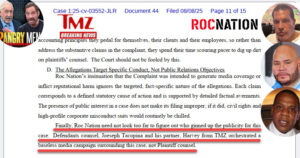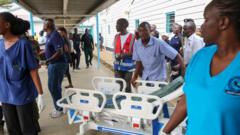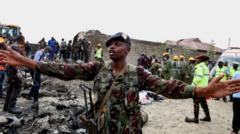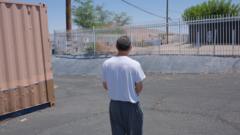Senait Mebrehtu's daughter, Hiyab, tragically drowned while trying to escape Eritrea to Kenya via smugglers, prompting her mother to speak out against the negligent traffickers exploiting vulnerable families.
Heartbroken Mother Blames Smugglers for Daughter's Drowning at Lake Turkana
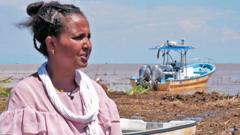
Heartbroken Mother Blames Smugglers for Daughter's Drowning at Lake Turkana
A mourning mother's anguish highlights the perils faced by Eritrean migrants attempting dangerous crossings in Kenya.
As dusk settled over Lake Turkana, Senait Mebrehtu grieved for her 14-year-old daughter Hiyab, who drowned while attempting to enter Kenya through a perilous route used by human smugglers. The Eritrean asylum seeker made the journey to the northern shores of the lake to reflect on her loss and pay tribute to her child.
Hiyab, who traveled with her sister on a perilous late-night boat journey, was met with powerful winds that ultimately led to disaster. "Had I known such dangers existed, I would never have allowed my daughters to attempt this journey," Mebrehtu lamented, reflecting on the negligence of the traffickers who facilitated their crossing.
Senait's own journey to Kenya began three years prior, when, fleeing religious oppression in Eritrea, she arrived with her two younger children on a tourist visa. At that time, she could not take her older daughters, close to conscription age in their militarized homeland. Encouraged by relatives, the girls sought help from smugglers to join their family, unaware of the risks involved.
A smuggler, speaking anonymously to the BBC, confirmed the lake's increasing use as a crossing point for migrants. Known as the "digital route," it has seen traffickers adapting due to heightened road patrols in Kenya. Despite the lucrative nature of her profession, the smuggler expressed concern for the safety of young migrants, pleading for families to think twice before sending their children alone.
Witnesses recounted the tragic incident where Hiyab's boat capsized just moments after setting off, claiming the lives of seven people. Survivors highlighted the reckless overloading of the boat, with reports indicating that it was carrying more than 20 individuals, far beyond its capacity.
Fishermen near the turbulent lake reported discovering bodies of migrants, believed to be Eritrean, in the water, pointing to a harrowing increase in fatalities among those making the dangerous journey. As of June 2024, the UNHCR reported a staggering 345,000 Eritrean asylum seekers in East Africa, highlighting the ongoing humanitarian crisis driven by military conscription and conflict in the region.
Eritrean lawyer Mula Berhan noted an upward trend in migration to Kenya and Uganda, which are viewed as safer havens compared to the conflicts ravaging Ethiopia and Sudan. This has spurred a lucrative smuggling network, where migrants unwittingly placed their fates in the hands of traffickers who exploit their desperation.
Migrants often find themselves trapped in holding houses, paying rent and food expenses, and as reported by the smuggler, some tragically die due to starvation. Despite the grim realities, smuggling operations continue to thrive as vulnerable individuals seek brighter futures away from oppression.
Mebrehtu's sorrow mirrors countless other families caught in this tragic cycle of exploitation, as she continues to mourn her daughter's death while feeling a sliver of relief that her other daughter escaped unscathed. "May God heal our land and deliver us from all this," she expressed, embodying the plight of many Eritrean families seeking refuge from their troubled homeland.







